Introduction to North Cyprus
The Name ‘Cyprus’
The origin of the word Cyprus is uncertain. There are various suggestions about the name, the most likely derived from the Latin work ‘ Cuprum’ which means copper.
Location
The island is situated in the north eastern corner of the Mediterranean Sea. It is about 40 miles from the south coast of Turkey (which can be seen on a clear day) and 60 miles from Syria to the east and 250 miles north of Egypt to the south.
Geographically – Celebrating A Rich Culture & History
The island occupies approximately 3,571 square miles with 486 miles of beautiful coastline. Northern Cyprus covers 36% of the total island. There are also two British Sovereign bases in the Southern part of the island. It is the third largest island in the Mediterranean after Sicily and Sardinia.
Population Logistics
The population of North Cyprus is approximately 300,000, the majority of whom are Turkish Cypriots and settlers from mainland Turkey.
Languages Spoken
Turkish and English is widely spoken and understood.
Communications & International Phone Cards
You can use the public telephone boxes outside the telephone exchange (opposite the post office in Kyrenia town). You will need a phone card which can be purchased near the telephone boxes. These phone boxes represent excellent value for money compared to the hotels and mobile telephones.
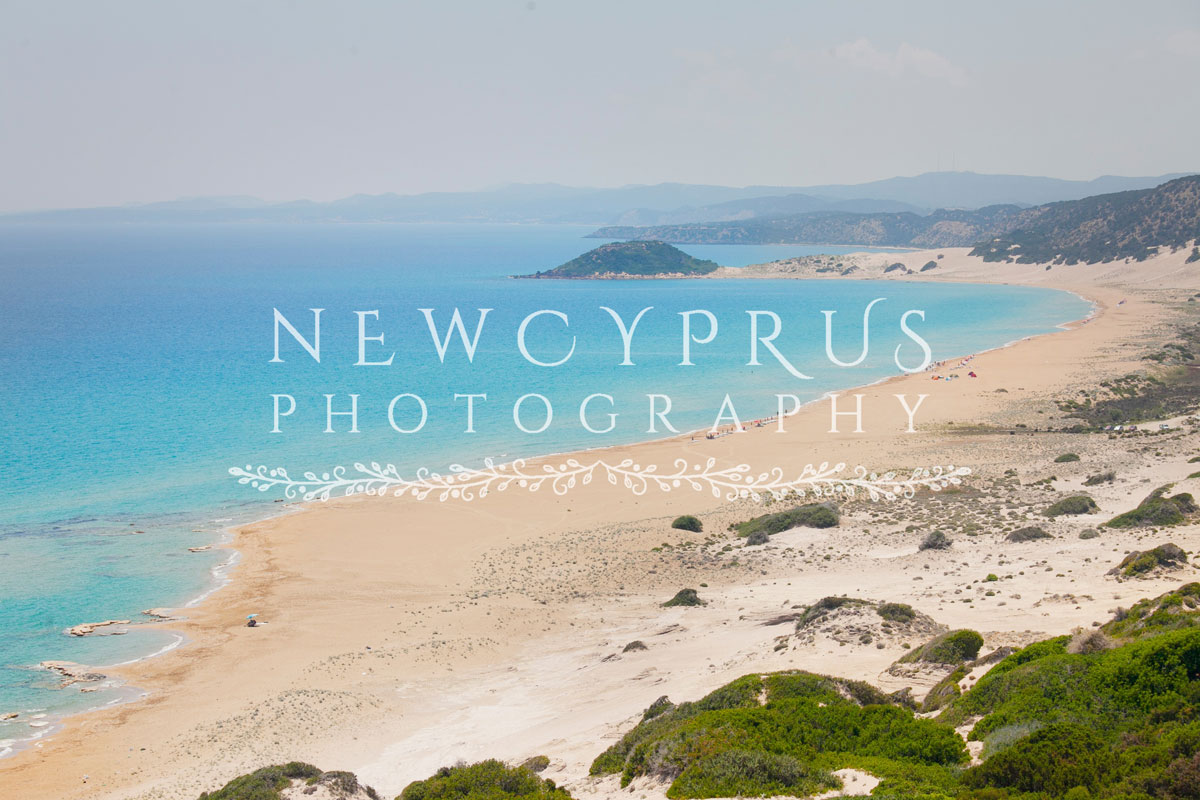
Physical Features of Cyprus
The most important features of the island are the two mountain ranges separated by the wide and fertile Masarya plain. Mesarya means ‘land between the mountains’ . The northern range is known as the Kyrenia range or Five Finger Mountains (named after its fist shaped mountain said to be the fist of Alexandra the Great). The southern range is called the Trodos Mountains.
Kyrenia Mountain Range is about 80 miles long, with its narrow range running parallel to the coast. It occupies about 100 square miles and is composed predominantly of limestone, dolomite and marble. The average height is over 2000ft, at the highest peak known as Kyparissovouno (Selvili Tepe) above Lapta with an elevation of 3,557ft. In spite of the fire of 2003, the mountains revive and remain free covered with olive, fir and carob trees.
Local Time Zones
Cyprus Time is one hour ahead of Central European Time.
Money Matters
Changing Money: Most hotel receptions, major shops and restaurants will accept foreign currencies especially pounds sterling and several will also change Travellers Cheques (with
your passport as proof of I.D.) the exchange rate fluctuates so it’s a good to check the rate before you exchange your money ( current rates are displayed in newspapers, exchange bureaus, and banks). We recommend you do not exchange all your money at once as the rate of exchange can change from day to day. You may prefer to use one of the many Exchange Bureaus and of course there are many ATM machines to choose from. ATL machines pay out in TL (Turkish Lira).
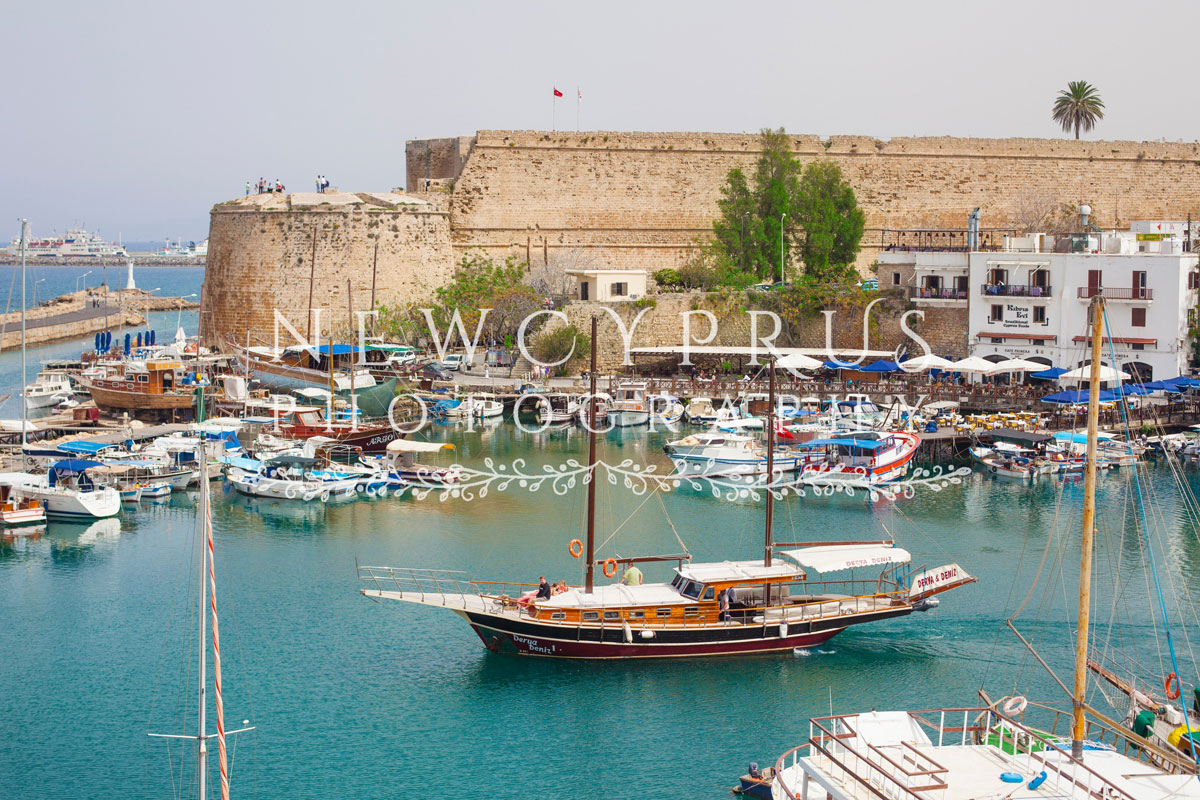
Climate
InterNations survey discovered Cyprus takes a high placing listed in ‘Top Countries with the Best Weather & Climate’ and came in at an amazing no.2. The climate of North Cyprus is typical Mediterranean, with very hot dry summers and cooler winters. The average temperatures can reach up to 40 Celsius and in winter months the lowest temperature tends to be around 15 Celsius. With a short and most pleasantly breezy spring and autumn.
Beaches – for miles and miles
You will be spoilt for choice, as we are spoiled with many beaches to choose from long stretches of sandy beach clubs with full amenities to isolated coves off the beaten track. Many beaches are easily accessed from the town. Some of the popular beaches (such as those with large hotel and restaurants ) will have a small charge for using their facilities. Altin Kumsal, known as one of the most beautiful beaches in the world, (Golden Beach) is located in the Karpaz National Park. 12 km of coastline with inspirational unspoiled beaches, clear sea, stretching as far as the eye can see makes this beach probably the most pristine beach on the whole island. Swimming is possible all year round, including December.
Cyprus Fauna
There are 39 mammals, 381 birds, 33 reptiles, 200 fish and more than 5000 insect species in Cyprus. Among the reported 39 mammal species, 22 bats, 13 land mammals, 3 marine mammals and 1 type of seal. The biggest mammal native to Cyprus in Moufflon, known as Ovia Aaris. (Gmelini) Ophion. There are 33 types of reptiles living on the island.10 species of snakes, 19 lizards and 4 are turtles. There are 3 poisonous snake species found in Cyprus. Only one of them (Macrovipera lebetina ) is dangerous to humans.
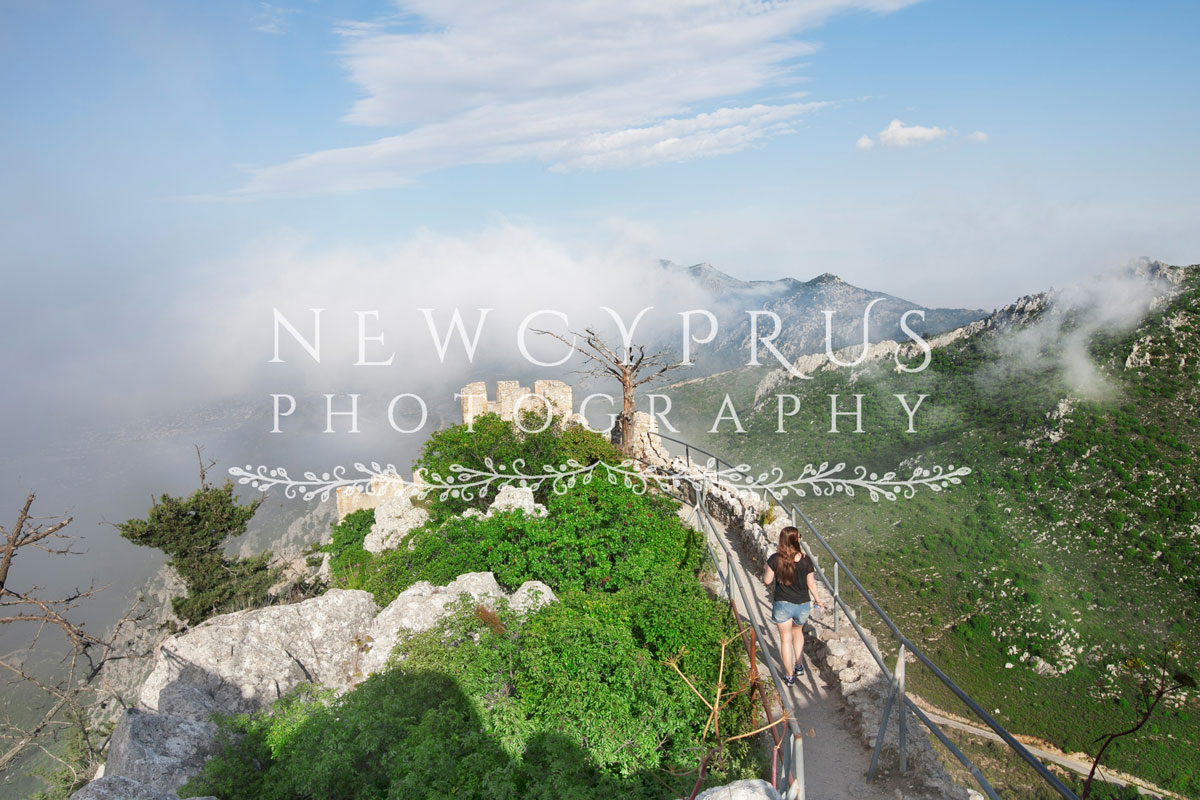
Cyprus Donkeys – A symbol of Cyprus at The Karpasia National Park
Karpaz, city of civilizations. Located on the tip of the peninsula, this park combines all the natural beauty of the island. The boundaries of The Karpasia National Park stretch from the Cape Zafer and Klides islands in the east end to the village of DipKarpaz, Ronnas sand dunes and ancient city of Karpasia in the west. Wild donkeys lead the list of animal species living in Cyprus. In Karpas donkeys live in certain areas within the National Park under protection and are viewed with great interest by the visitors. Wild donkeys continue to multiply on the pristine territories.This particular region was chosen as an extremely important biological diverse area due to species living here as well as being historically and archaeologically rich.
Turtle Watch
As a rough guide, beaches to the west tend to be pebbly and ones to the east Sandy. The long sandy stretches of beach, along the north eastern coast and Karpaz are nesting beaches for the ‘Green’ and ‘Loggerhead’ turtles. Both are endangered species. They nest between June and October and we ask you take extra care during these months – these beaches are patrolled during these times to protect the nests. If you want to find out more about the turtles or go on an organised ‘Turtle Watch’ you should visit the research station at Alagadi Beach. The biologists there are English speaking and always happy to talk with you – they can be found in the hut by the beach. The Peninsular coast is also a preferred nesting site for the sea turtles, which became one of the main criteria for choosing this part of the island as a National Park. Numerous nests of Green (Chelonia Mydas) and Loggerhead (Caretta Caretta) sea turtles dispersed in different beaches. Seals on the protected territory behave like the real masters of the sea and reproduce in coastal areas. At the same time, this area is a major nesting colony for gulls (Audouin, Larus audouinli).
Leisure Time Means Library Time ~ At Your Pleasure!
Kyrenia Society National Library : Should you wish to visit a library, please don’t hesitate, the library In Kyrenia holds a great supply of books, worth a browse. Located in Kyrenia town centre across the road from The Colony Hotel. If you choose to take out a reading book, we advise you ask for the return date, normally four day time scale!!
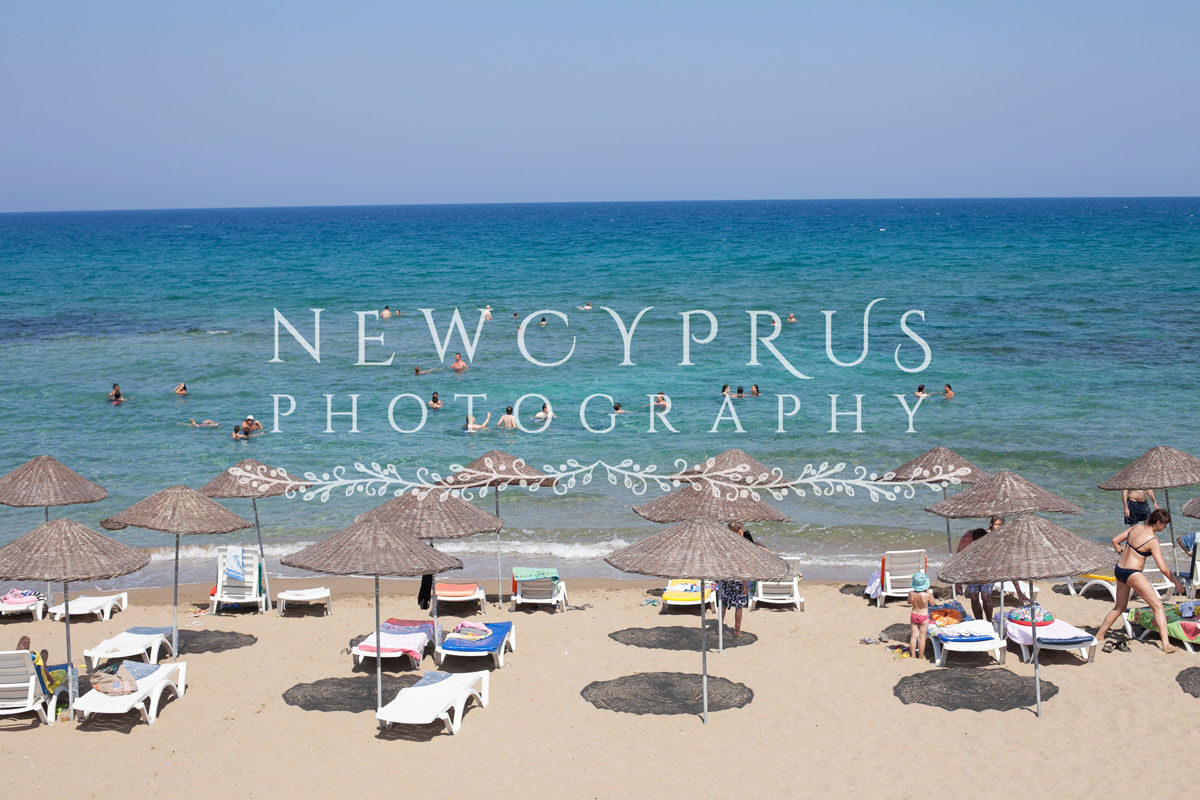
Sea Turtles
North Cyprus beaches became a nesting place to 200 cute Caretta Caretta (Loggerhead) turtles and the Green turtles; which come each year to lay their eggs. Alagadi, Akdeniz and Karpaz sandy coasts are their favorites. The best time to witness these cute creatures meeting with the water for the first time is the end of August or the beginning of of September.
Birds & Butterflies
The geographical position of the island makes it the focal point for migratory birds. Each year, more than 370 species of birds visit the region. More than 50 species butterflies are also found here. The Iskele Wildlife Information Centre consists of two buildings (information ) and exhibition hall, a rocky terrain, which stretches behind the holds a stretch of limestone flora growing, this inspird the opening of the Wildlife Centre. It has a beautiful garden,taken care of by staff. Unique to Cyprus attract many visitors. Especially in winter and spring, Three endangered species of birds that live only in Cyprus. Otis Scops Cyprius (Cyprus Scops Owl) Oenanthe Cypriaca (Cyprus Wheatear) Sylvia Melanothorax (Cyprus Warbler) .. The butterflies of Cyprus consist of one of three endemic butterflies species in North Cyprus, Maniola Cypricola. More than 50 butterflies species can be found in North Cyprus, with this Cyprus is also a stop off point for migratory as a result of its geographical location.
Birds & Butterflies & More… even Pink Flamingoes!
How about, waking up New Year’s Day, to the most beautiful sight of pink flamingoes migrating to the warmer climate of Cyprus. Figures reaching 7,000 up to 10,000 flock to the Larnaca Salt Lake, having fled northern countries which were hit with a wave of heavy winter weather. A rare black flamingo thought to be the only one of its kind in the world returned to Cyprus, April 8, 2015, spotted in a salt lake at the Akrotiri Centre.
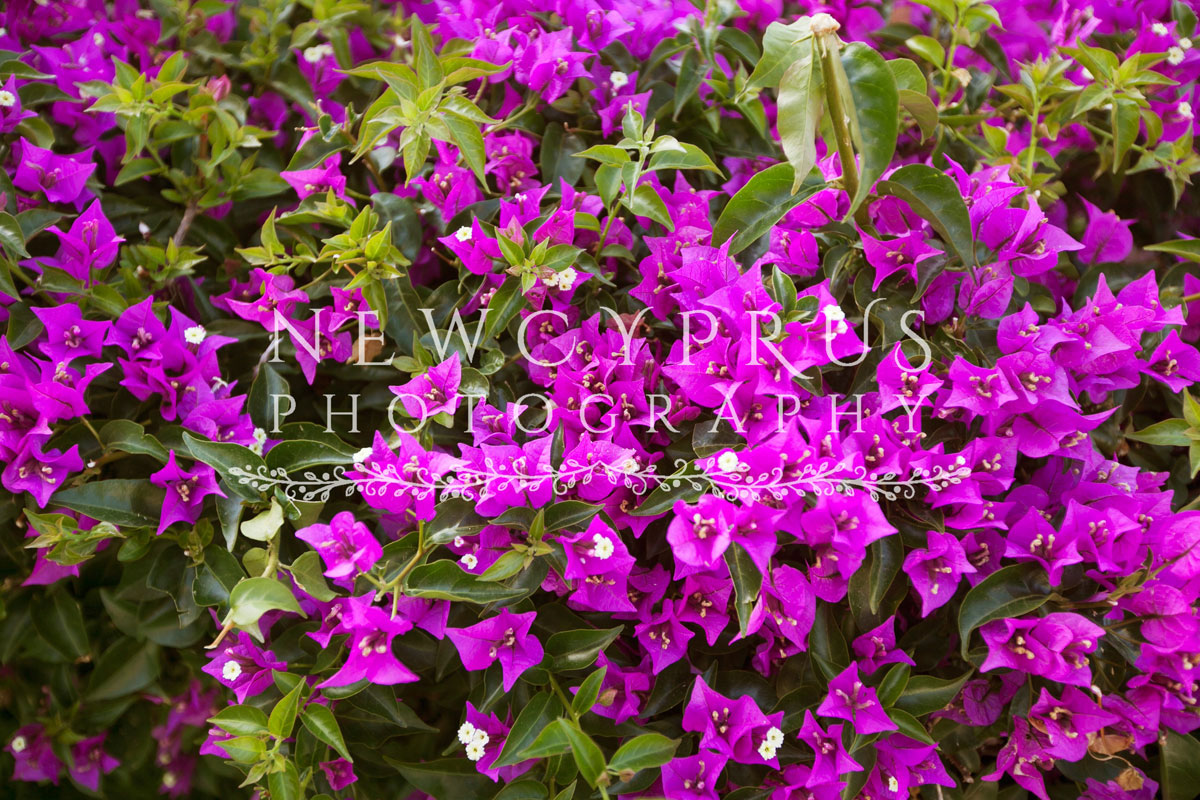
Flora Of Cyprus – Flowering Seasons, a leisurely walk through unspoiled nature…
Another facet of it’s beauty, is a birds eye view of the flora of northern Cyprus,. Reflected in the crowning glory, of the Mediterranean in Springtime! Discover North Cyprus and its endemic plants in full bloom. The sequence of flowering through the the year, is concentrated through October and April, for flowers, herbs, and plants such as Cyprus white thyme, Cyprus cloves. There are 38 known species of such kind. Cyprus roses are many such as Yellow Rose, Cyprus rose, Rock rose and Chinese rose. Bougainvillea, is a genus of thorny ornamental vines, bushes, and trees with flowers like spring leaves near its flowers, spilling out up to 18 species in vibrant colors. Sunflower and marigold fields are commonplace, lilies, buttercups poppies daisies and more, all the wonders of nature are at your door! Perennially flowers and plants are found for all seasons. The most famous plant, endemic to North Cyprus is Cyprus Medos tulips (also known as Tulipa Cypria). Daffodils, mountain tulips, orchids, sand lilies and monumental trees are amongst the most important flora and fauna vanities. A tree in front of Lale Mustafa Pasha Mosque in Famagusta, is over 700 years old, named Sycamore Fig. This tree is considered to be the oldest tree in Cyprus.
Orchids & Orchid Festivals…
The Orchid Festival takes place early March time. The municipality takes the occasion to a two day festival, with attractions, as well as entertaining, folk dancing, music, local delicacies on offer, and stalls offering handicrafts, an interesting environment to observe the locals and while away the time! Orchids in particular flourish this climate, the Orchid Valley & Orchid Observation yearly walk is staged by the Denizli Gemikonagi Development Association at Lefke European University. At the festivals they are showing the visitors around 32 endemics typical to Cyprus.
Turkish Cypriot Cuisine
North Cyprus posses a very rich and distinguished tasting cuisine. A Gastronomic Kitchen Garden resulting from cultural interactions, similarities of Cyprus to those of Anatolia and the Middle East appears throughout this splendid kitchen. Enjoy the culinary delights cooked with years of inspiration and tradition, this cuisine is outstanding in flavor. Some of the more prominent examples of the Cypriot Cuisine begin with Turkish Breakfast..
Halloumi Cheese (Helim)
Cyprus’ most famous food in a brined cheese, that is often served grilled.
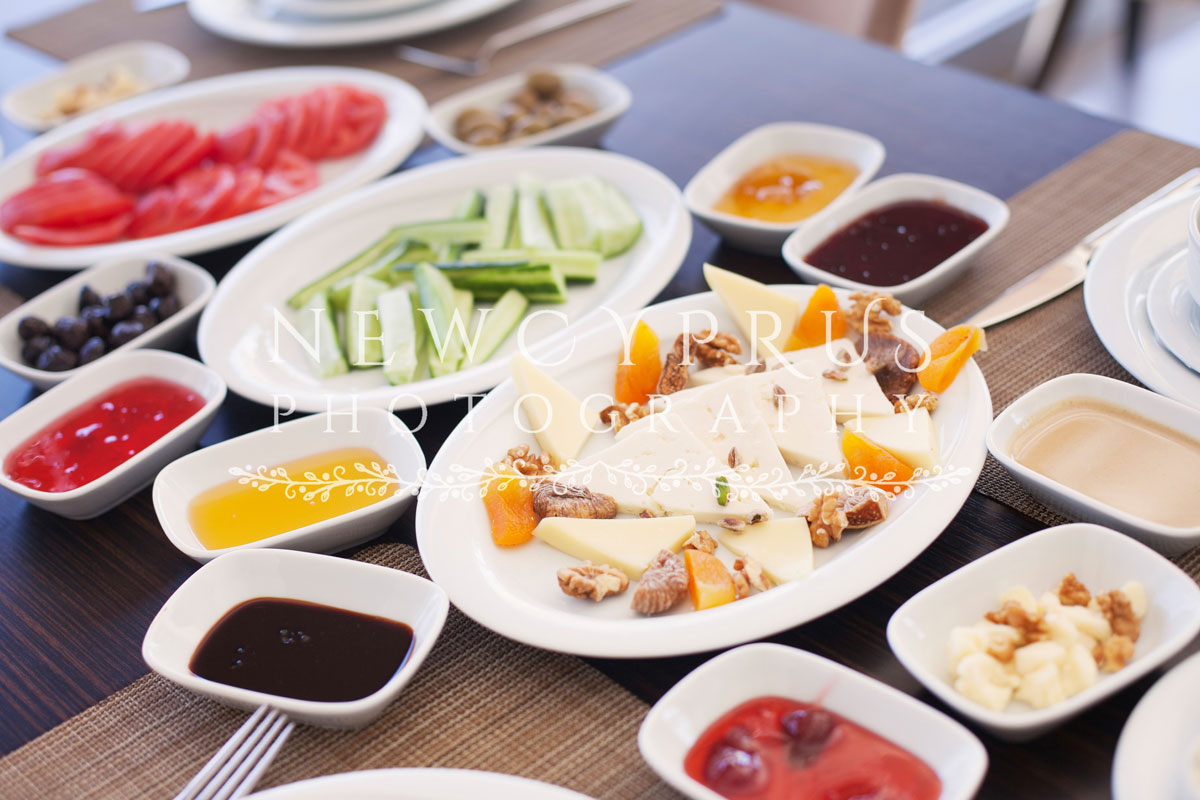
Traditional Turkish Breakfast
Turkish Breakfast: eggs fried in copper ‘sahan’, white cheese, yellow cheese, helim, salami, olives, tomatoes, cucumber, butter jams, honey and village bread.
Les Hors d’oeuvres ~ Soups
Appetizer Soups: commonly used are lentils and pulses, pumpkin, chicken, vegetables, cracked wheat (Tarhanna) with fried halloumi, yoghurt, hummus, and many more delicious ingredients. They are most qualified when it comes to amazing appetizers, Les Hors d’oeuvres, or Meze a Cyprus kitchen with its own unique formula. The variety and variation of Mediterranean cuisine, makes meze a unique experience and the only place you will find this combination of different appetizers plentiful in choice is Cyprus.
A Typically Turkish Cypriot Meze
Local olives (a culinary culture), village yoghurt, fresh vegetables, beetroot in vinegar,
Eşek Sevsin/Tahini (sesame pasta with lemin juice); Pastirma (salami/grilled spicy sausage) ; Grilled Hellim (Halloumi grilled) ; Celery Vinegarette ; Fresh Coriander Herb Salad ; Hummus (chick pea paste); Renga (salted smoked herring) ; Samarella (cured lamb meat) ; Koubes, Meatballs with a crispy bulgar rice coating; Black Eyed Peas Salad ; Iced Almonds ; Broad Bean Salad ; Artichoke in Olive Oil ; White Cheese Borek; Hellim Borek ; Cakistez (cracked Green Olives) ; Eggplant Yoghurt Salâd; Anchovies; Sardines; Piaz (White Bean Salad); Calamari deep fried in batter or salad or spicy sauce; accompanied by local village bread and pitta bread.
Cyprus Pickles
Cyprus pickles are made with adding pickling vinegar, commonly used ingredients consists of a wide variety of wild plants and their shoots. Celery, cabbage, carrot, pickled quail is a speciality (small wild bird). Pickled Beetroot, pickled quail eggs, Amberibulya (hunting birds), pickled octopus are commonplace.
Molehiya
Molehiya (Molchiya) takes its name from the ‘jute plant’ cultivated especially for cooking, a dark green leaf, which comes dried and stored for awhile before use. It is cooked with lamb or chicken pieces, and served with rice, pickles and spring onions.
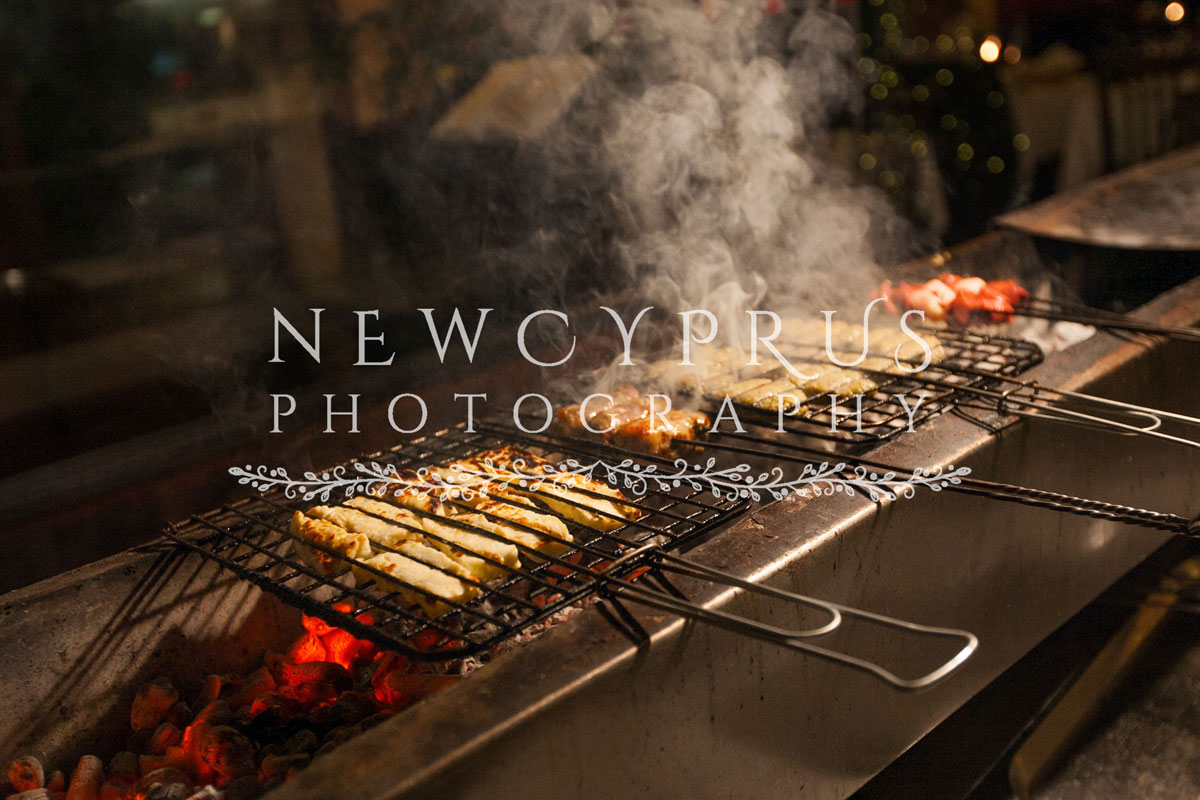
“Kebabs” Cooking on Charcoals, a Long-Standing Dining Tradition!
Şeftali Kebab, The so-called “peach kebab” is mincemeat wrapped in fatty netting, known for its succulence. Traditionally, meat cubes cooked on Charcoal, lamb chops or chicken, are most popular although they barbecue fish and vegetables too. This is a long-standing tradition through time.
Hırsız Kebab ~ Robbers Roast or (Kleftico)
‘Hırsız’ means ‘thief’ in Türkish. The dish gained its name from the past times of hardship in Cyprus. where sheep where stolen from the herds of the rich and cooked in this way. It consist of a slow-cook meat, lamb shank or chicken and potato traditionally, in a clay oven.
Kolakas Yemegi (Baked Potato Ragu) A world-class winner!
Kolakas a cousin to the best roots of the Cyprus potato (Cyprus potato, is a world-class winner, runner up to the number one Mississippi potato.) A plant very similar to potato in taste but sweeter. Cooked in a tomato based sauce, choice of chicken or meat or maybe something more vegetarian in style, perhaps celery. Commonly oven roasted.
Cicek Dolmasi (Stuffed Pumpkin Flowers)
Pumpkin-flowers (stuffed with rice and herbs) which golden yellow-colour transforms into unique flavour (a hot summer day special).
Ayrelli ( wild Asparagus plant )
Ayrelli, a name given to the asparagus plant in Cyprus. It is a wild plant growing in abundance near springs and specific nature walks. To collect this beautiful tasting wild plant which can be found around springtime, pan fried with eggs in olive oil similar to an omelette. Before eating serve fresh lemon and squeeze over dish.
Borek
Traditional Cyprus cheese and/or Helim filling (Halloumi Pastry cases); (filling of grated halloumi and fresh or dried mint) which is similar to ‘gozleme’ (savoury filled pastry parcels, where fillings come in a wide variety including, spinach, potato, cheese, mincemeat, ‘nor/cottage cheese, etc.
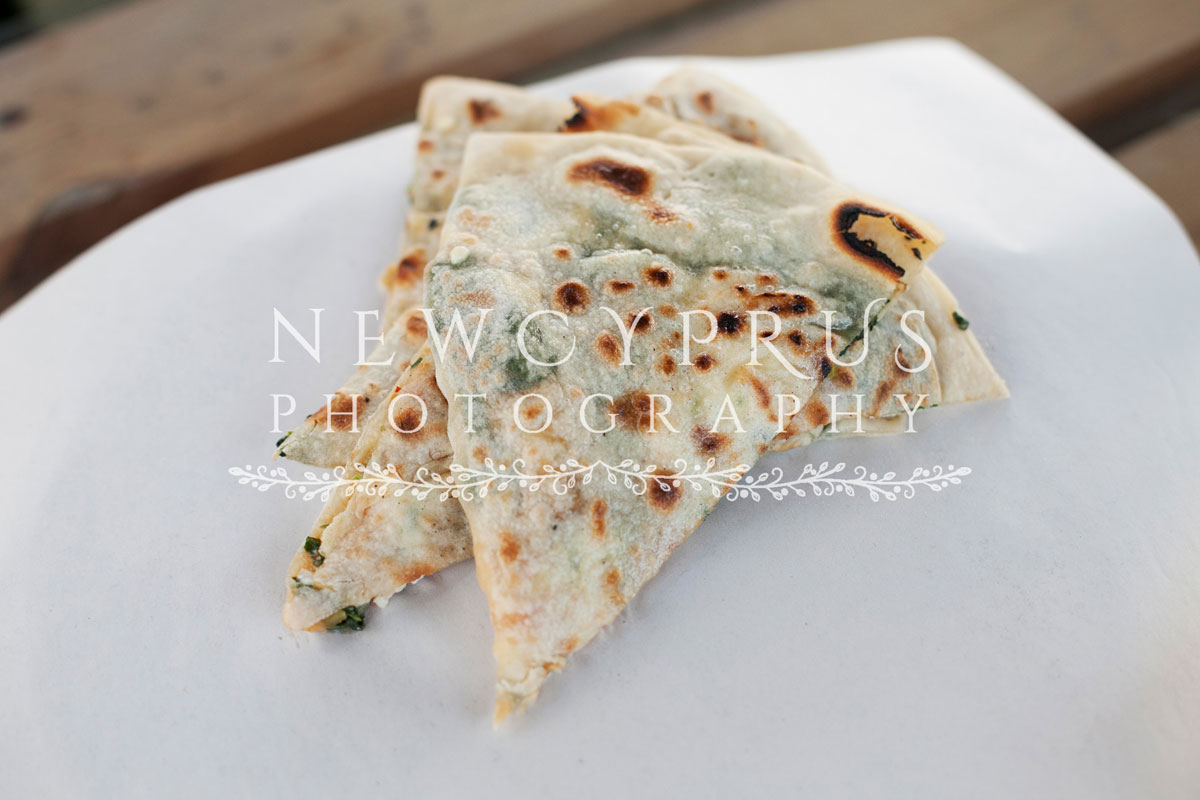
Halloumi Salad, Traditional Olive Oil Dressing
Salads are typically after the Mediterranean style, seasonal leaves, cucumbers, tomatoes, coriander, halloumi, grilled or not, dressed with an olive oil vinegarette, or lemon juice.
A Sweet Tooth: Lokum!
Sweets ‘n Desserts, in a great variety, styled sweet pastries, such as Lokum, dough balls (similar to doughnuts), deep fried then dipped in sugar syrup. Borek: An ottoman favorite at the dining table, made with thin pastry shaped parcels, filled with a sweet cottage cheese called ‘nor peynir’ and sugar. Honey, is a favorite dip, or drizzled over the dish when dining.
Ceviz Macunu (Candied Walnuts & Organic Fruits) in honey syrup!
Anatolian Kitchen. It is an exquisite experience, to enjoy the luxury of such fruit as figs, water-melon, oranges. There powerful effect acts as an aphrodisiac, (the ottomans are in the know-how when it comes to knowledge good cultures) foods such as these act as an energy boost. Served traditionally with a glass of water and Turkish Coffee. A taste superiority like no other!
Baklava
Baklava: A traditionalism from a bygone ear, this rich desert made from layers of Filo-pastry filled between with crushed walnuts and sweetened with kaymak, and held together with sugar syrup or honey, served with vanilla ice cream, probably comes in at top three favorite desserts. Sweets are a major event, and taken with Turkish Coffee or Turkish Tea.
Paluze
In a Cyprus kitchen, paluze is carob or grape pudding. Served with almonds sprinkled on top.
Turkish Coffee ~ a cultural way of life!
The History of Turkish Coffee North Cyprus: Turkish Coffee came to Cyprus during the Ottoman period, with families who migrated from different areas around Anatolia. Since then the Cypriots cook there daily coffee in there special way. The process of coffee at home at that was a laborious preparation. It consisted of first roasting green coffee beans in a pan, then ground by hand, in a mill, then finally boil coffee on burning coal. All this work just to enjoy a small cup of this divine drink. Today, at picnics, they warm sand that they cook the coffee on. When you order Turkish Coffee, there is way to drink coffee according to taste. Without sugar (sade); a little sugar (as şekerli); medıum sweet (orta); sweet (şekerli).
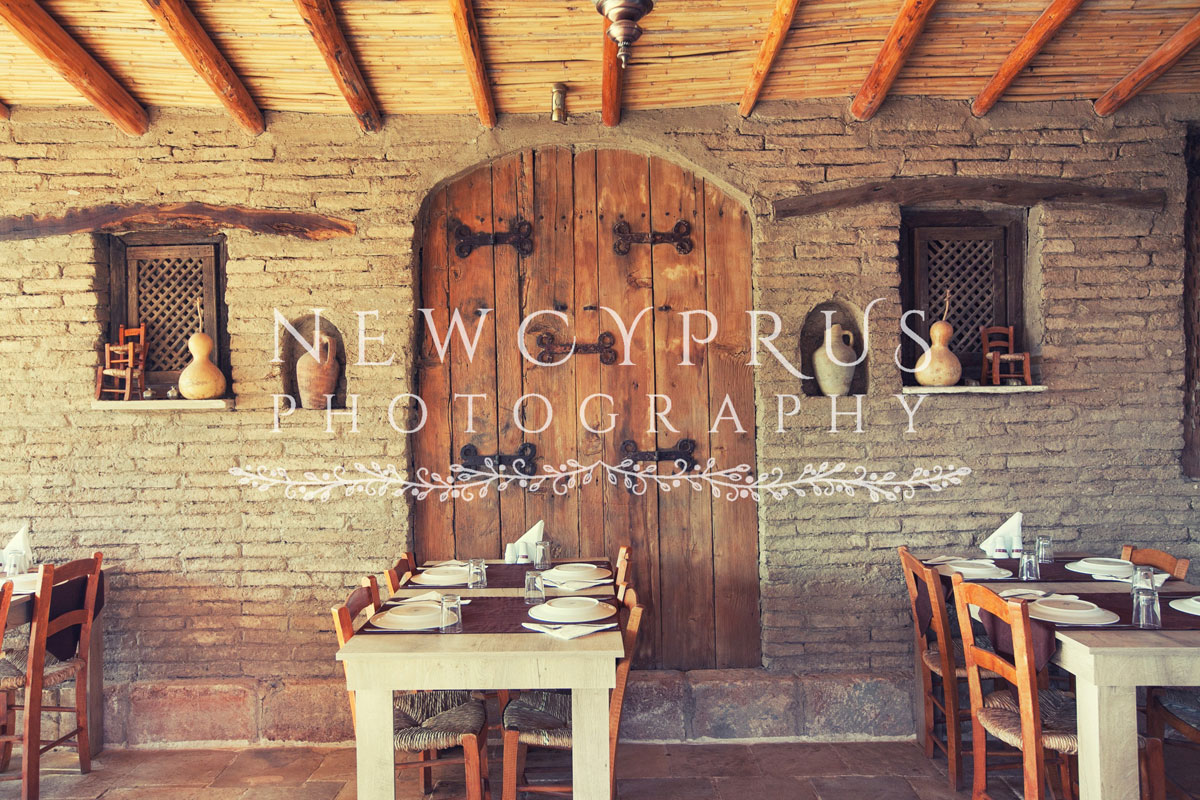
A Mediterranean Fruit Plate ‘Made in Cyprus’
Lemon and Orange Groves The home of Citrus & Fruit Orchards ~ Guzelyurt!
We are spoilt when is comes to North Cyprus’ ownership of a piece of paradise, fruit! Guzelyurt, is the ‘heart and soul’ of fresh fruit production. Guzelyurt, is an agricultural market town better known as ‘Beautiful land” famous for it’s flat landscapes, fruit marketing industry, fruit in in abundance varieties of fruit providing for the whole of the island. It’s rich red soil tenders easily for producing in quantity, adorned with Jaffa’s and Washington Oranges, Lemons, Satsumas, Mandarins, Carob, Walnuts, Strawberries, banana crops, figs, pomegranates, and watermelon crops. The orchards are a vision of loveliness and a sightseeing worthy..
Cyprus’s Fruit is a Dream!
“Cypriot fruit is simply fascinating, as they taste like they should” !! The joy of harvesting fruit remains a pleasure and privilege and is part of Island living. Cyprus oranges, lemons, limes, tangerines, pomegranate and other native species of island fruit produced is mind-blowing, exotic fruit, such as figs and dainty bananas mingle with the taste buds and look as good as they taste! Benefitting from seasonality, fruits are all year round, bananas starting from April, are available and continue until the end of winter. The Cypriot fruit scores high due to its aromatic juice and balanced sugar-acidity. Nothing beats the abundance of Cyprus’s seasonal fruit. One tip visitors need to know is ” live the moment”! Serve chilled as a perfect finale to any meal, or a delicious snack accompanied with a slice of halloumi.
A Calendar of Cyprus Fruit
Apples June-October, Apricots June-July, Avocados, almost all year round, Cherries end-of-July, Formosa’s early June – Sep, Grapefruit, end of Oct – May, honey-Melon late July – late Sep Peaches June – late Sep, Plums late June – early Sept, Strawberries end of Oct – end of Apr, Tangerines end of Oct – end of April, Tomatoes all year round, Water-Melon May – end of Oct.
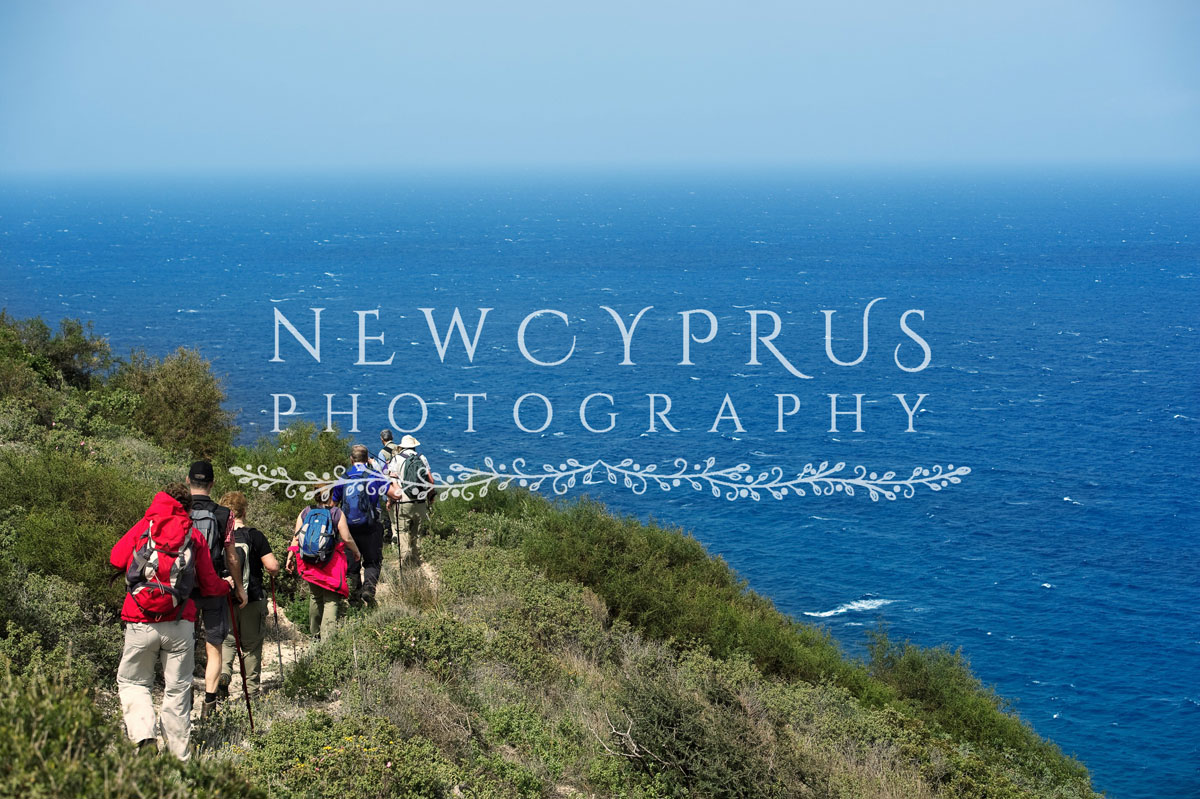
Electricity & Drinking Water
Throughout the country the voltage is 220/240V. Sockets are 3-pin same as UK.
Even though tap water is perfectly safe to drink, generally water within the hotels tends to come from storage tanks. We advise caution when drinking tap water and recommend you purchase bottled water for all times if you can.
Like most islands there is a shortage of water especially during summer months therefore please do you bit and help save money by being sensible with your water consumption. Thank you for helping to save the planet.
HEALTH MATTERS!
The word for Pharmacy is ‘ Eczane’: which can be found easily in towns and large villages. For minor ailments or if you know what you need, you can approach the Pharmacist without seeing a doctor first. Most medication can be acquired without prescription and medication is very cheap here compared with the U.K and most of Europe.
DOCTORS & HOSPITALS
We sincerely hope you do not fall ill whilst on holiday, but if you do it so important that you contact us or a doctor depending on the severity of your situation.
There are a number of private hospitals where you can call for appointments or emergency services. We recommend one private optional, as follows: Kolan British Hospital, Kyrenia town centre. English speaking.
Kolan British Hospital: (24 hours) T: + 90 (392 ) 815 59 55 or T: + 90 (392) 815 59 00
You will be able to visit this hospital at any time and pay for the service privately.
AMBULANCE (24 hours) T: +90 533 830 45 35
State Hospital Kyrenia Dr Aycicek T: + 90 (392) 815 12 66
State Hospital Nicosia Dr Nalbantoglu T: + 90 (392) 366 53 28
Alternatively please inform us (Lapida) of your illness and ask us for assistance. We will guide and assist you in finding the appropriate clinic or hospital for your needs.
Emergency Telephone Numbers:
Ambulance 112
Coast Guard 158
Fire 199
Police 155
Police General Directorate T: +90 (392) 228 34 11


